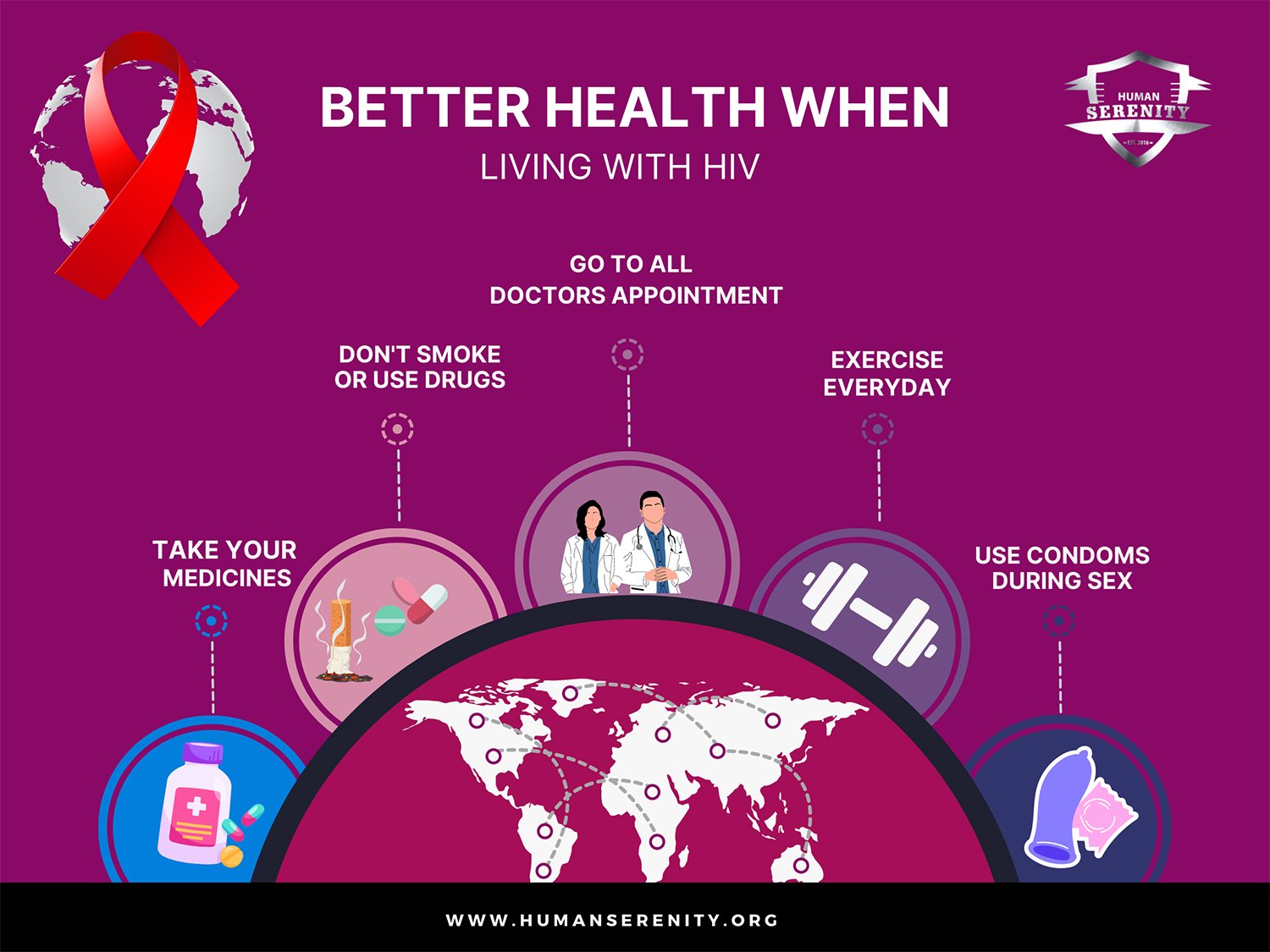

HIV (Human Immunodeficiency Virus) is a virus that attacks the immune system, weakening the body's ability to fight off infections and diseases. It is primarily transmitted through unprotected sexual intercourse, sharing needles, or from an infected mother to her child during childbirth or breastfeeding. If left untreated, HIV can progress to AIDS (Acquired Immunodeficiency Syndrome), which is the final stage of the infection. AIDS is characterized by severe damage to the immune system, making individuals more susceptible to various opportunistic infections and cancers. Although there is no cure for HIV/AIDS, antiretroviral therapy (ART) can effectively manage the virus, improve quality of life, and reduce transmission risk.
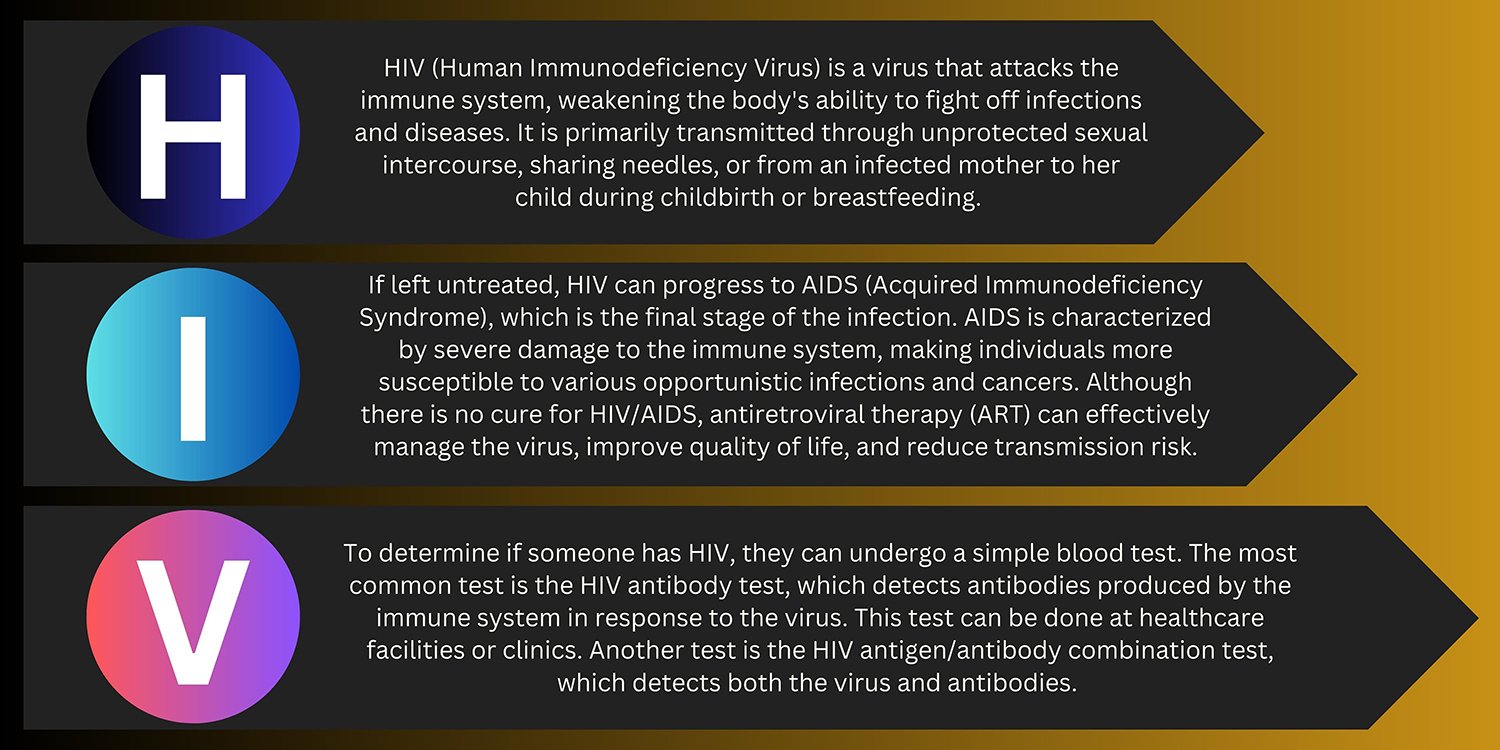
HIV (Human Immunodeficiency Virus) is believed to have originated from non-human primates in Central and West Africa. The most widely accepted theory suggests that HIV crossed over to humans through the hunting and consumption of infected chimpanzee meat, specifically through contact with infected blood. This transmission likely occurred in the early 20th century. The virus then spread within local populations, and through migration and travel, it eventually reached other parts of the world. HIV is thought to have transitioned from a simian immunodeficiency virus (SIV) to a human variant, leading to the emergence of the global HIV pandemic, which has had a profound impact on public health and society.
To determine if someone has HIV, they can undergo a simple blood test. The most common test is the HIV antibody test, which detects antibodies produced by the immune system in response to the virus. This test can be done at healthcare facilities or clinics. Another test is the HIV antigen/antibody combination test, which detects both the virus and antibodies. Rapid tests provide quick results within minutes, while laboratory tests may take a few days. It's essential to consult a healthcare professional who can guide you through the testing process, provide accurate information, and offer appropriate counseling and support.
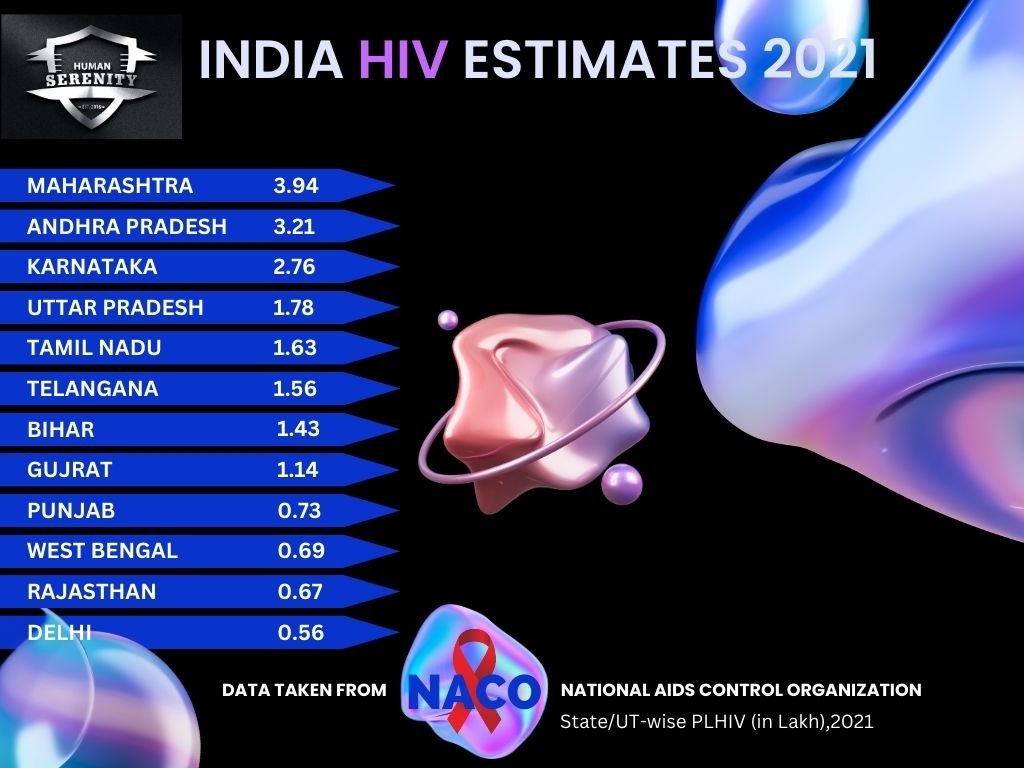
HIV, or Human Immunodeficiency Virus, is a viral infection that attacks the immune system. It is important to note that the symptoms of HIV can vary widely from person to person, and some individuals may not experience any symptoms at all, especially during the early stages of the infection. However, common symptoms may include flu-like symptoms such as fever, fatigue, sore throat, swollen lymph nodes, and body rash. Other symptoms can include muscle aches, joint pain, night sweats, weight loss, and recurrent infections. It is important to remember that these symptoms can also be caused by other illnesses, and the presence of these symptoms alone is not indicative of an HIV infection. The only way to definitively determine if someone has HIV is through specific blood tests that detect the presence of the virus or its antibodies. If you suspect you may have been exposed to HIV or are experiencing any concerning symptoms, it is essential to consult a healthcare professional for testing and guidance.
Human Immunodeficiency Virus (HIV) infection progresses through several stages, each characterized by specific clinical and immunological features. Here are the stages of HIV.
It is important to note that the progression of HIV can vary from person to person. Timely diagnosis, treatment with antiretroviral therapy (ART), and consistent medical care can significantly slow down the progression of the disease, prolonging life expectancy and improving quality of life. ART can suppress the virus, reduce viral load, preserve immune function, and decrease the risk of transmission.
Regular monitoring of CD4 cell count and viral load, along with adherence to treatment, are crucial in managing HIV infection. It is essential for individuals at risk or with potential exposure to get tested for HIV, seek appropriate medical care, and adopt preventive measures to protect themselves and others.
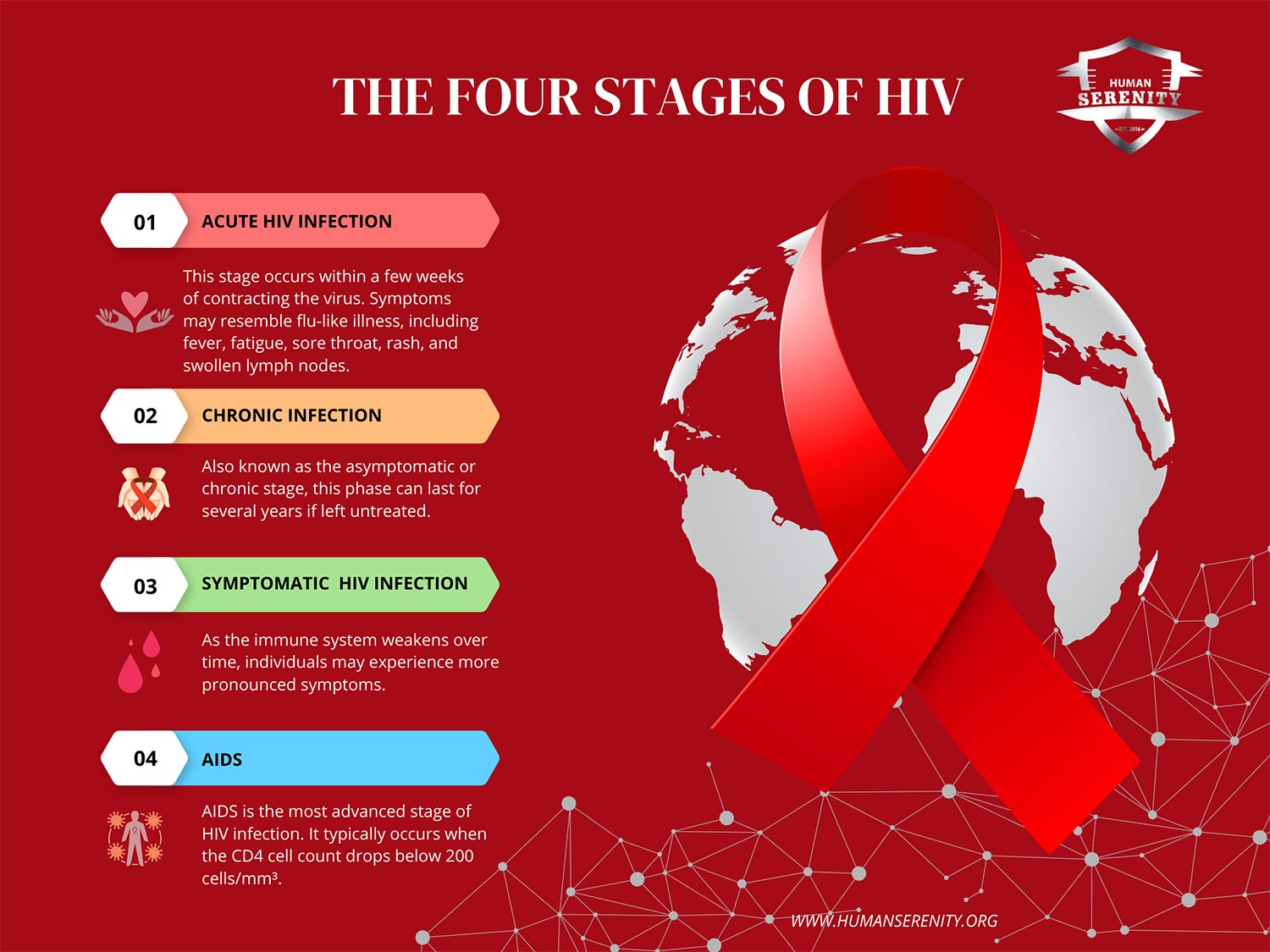
The treatment of HIV/AIDS involves a combination of antiretroviral therapy (ART) and supportive care. Antiretroviral drugs suppress the replication of the HIV virus, slowing down the progression of the disease and improving the patient's immune system. ART is typically taken as a daily regimen of multiple medications, which may vary depending on the individual's specific needs and the stage of the disease. Alongside medication, patients may receive counseling, nutritional support, and treatment for opportunistic infections. Adherence to the treatment regimen is crucial for its effectiveness. Early diagnosis, access to healthcare, and ongoing medical monitoring are essential for managing HIV/AIDS effectively
At the early stage of HIV infection, it is not currently possible to cure the disease. However, with early detection and proper medical care, it is possible to manage HIV effectively and slow down its progression. Antiretroviral therapy (ART) is the primary treatment for HIV, which involves taking a combination of medications to suppress the virus and preserve immune function. This treatment can help people with HIV live long and healthy lives by reducing viral load, increasing CD4 cell count, and preventing the development of AIDS-related complications. While a cure for HIV is still being actively researched, early diagnosis and treatment remain crucial for managing the disease and preventing its transmission.
Overcoming HIV-related stress can be a challenging journey, but with the right strategies and support, it is possible to manage and reduce the stress associated with the condition. Here are some suggestions to help you in overcoming HIV stress:
Remember, overcoming HIV-related stress is a process that takes time and patience. Each person's journey is unique, so find the strategies that work best for you. With a comprehensive approach, a strong support system, and self-care, you can manage stress and live a fulfilling life despite HIV.
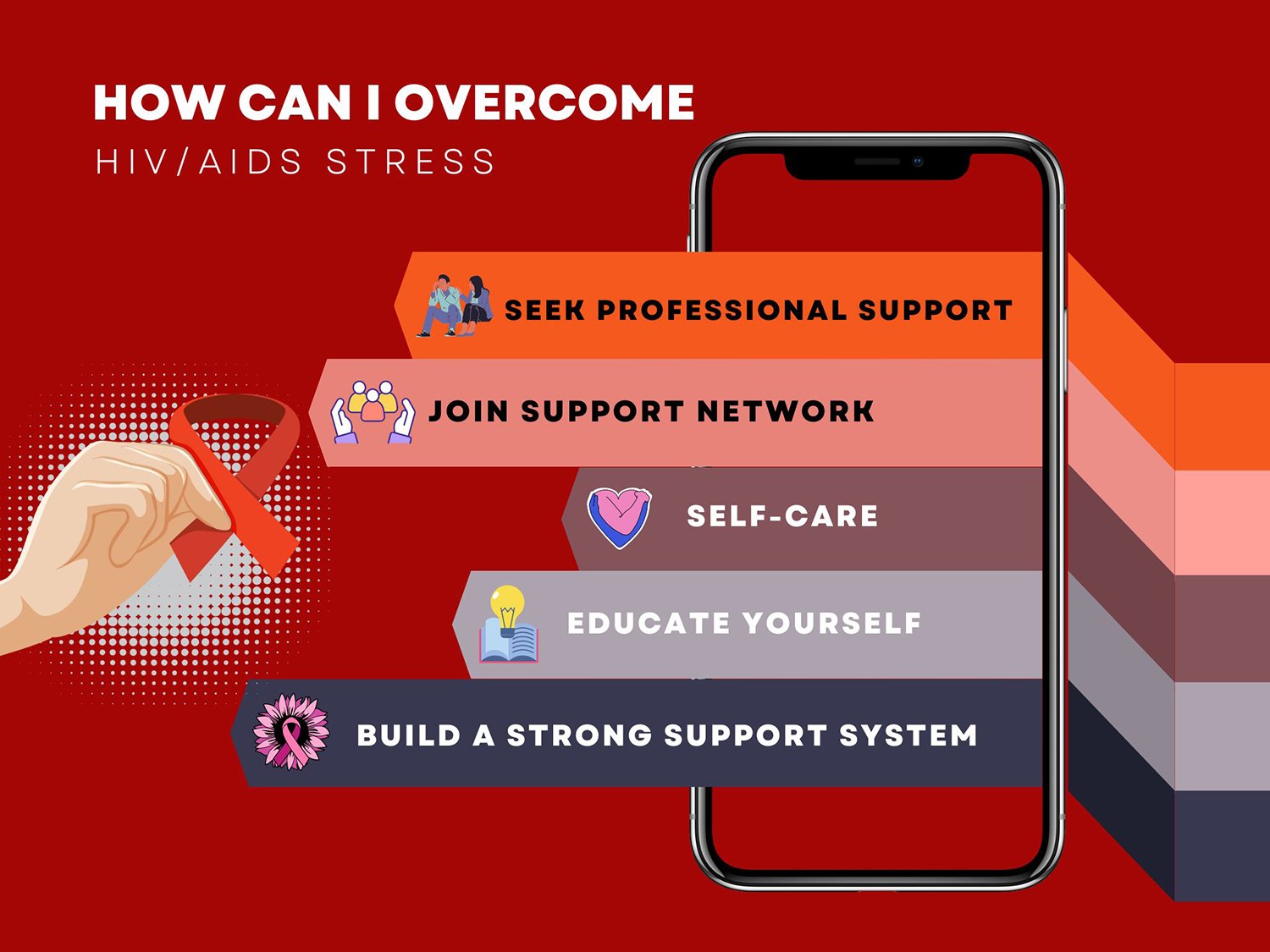
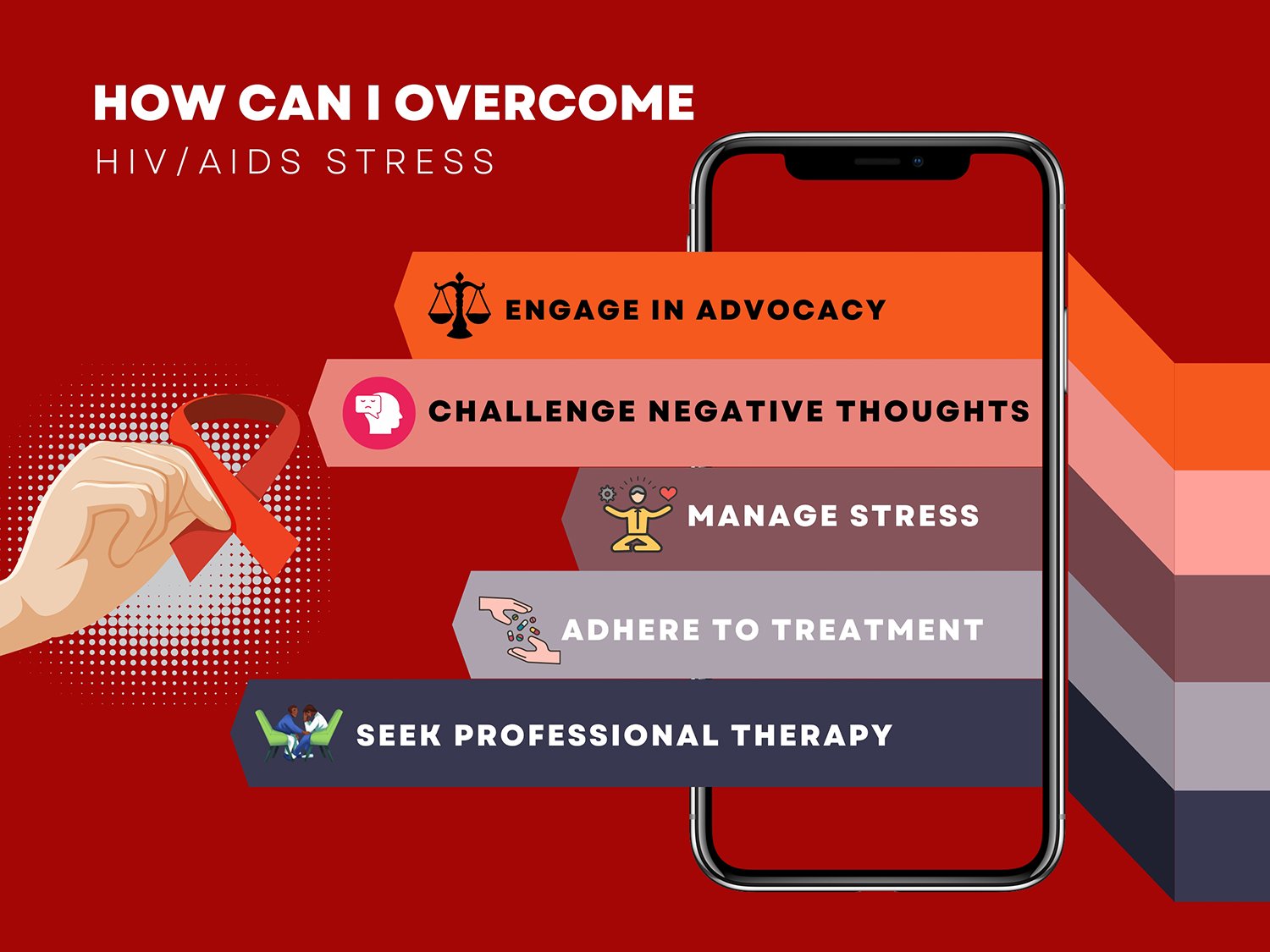
As of my knowledge cutoff in September 2021, there is no known cure for HIV/AIDS. However, significant progress has been made in the field of HIV/AIDS research, and ongoing efforts offer hope for potential future advancements.
Current treatment options for HIV/AIDS involve antiretroviral therapy (ART), which can effectively suppress the virus and allow individuals to lead healthy lives. ART helps control the virus by reducing its replication and slowing down the progression of the disease. With proper adherence to ART, people with HIV can have near-normal life expectancies and reduced transmission risks.
In terms of a potential cure, scientists and researchers are actively exploring different approaches. One promising area of research is gene editing technologies, such as CRISPR-Cas9, which has shown potential in laboratory settings to selectively target and modify the HIV virus in infected cells. However, more research is needed to determine the safety, efficacy, and feasibility of these techniques in human trials.
Additionally, efforts are underway to develop HIV vaccines that can provide long-term protection against the virus. Several vaccine candidates have shown promising results in early clinical trials, but further research is necessary to ensure their effectiveness in larger populations and long-term durability.
While the future remains uncertain, advancements in science and technology, combined with continued research and global efforts, hold the potential to find a cure or develop innovative strategies that could lead to sustained remission or eradication of HIV/AIDS. However, it is important to note that predicting a specific timeline for such breakthroughs is challenging, as scientific research can be complex and time-consuming.
HIV (Human Immunodeficiency Virus) is not spread by casual contact or everyday activities. It is primarily transmitted through specific bodily fluids, including blood, semen, vaginal fluids, and breast milk. Here are some key points to understand how HIV is not spread:
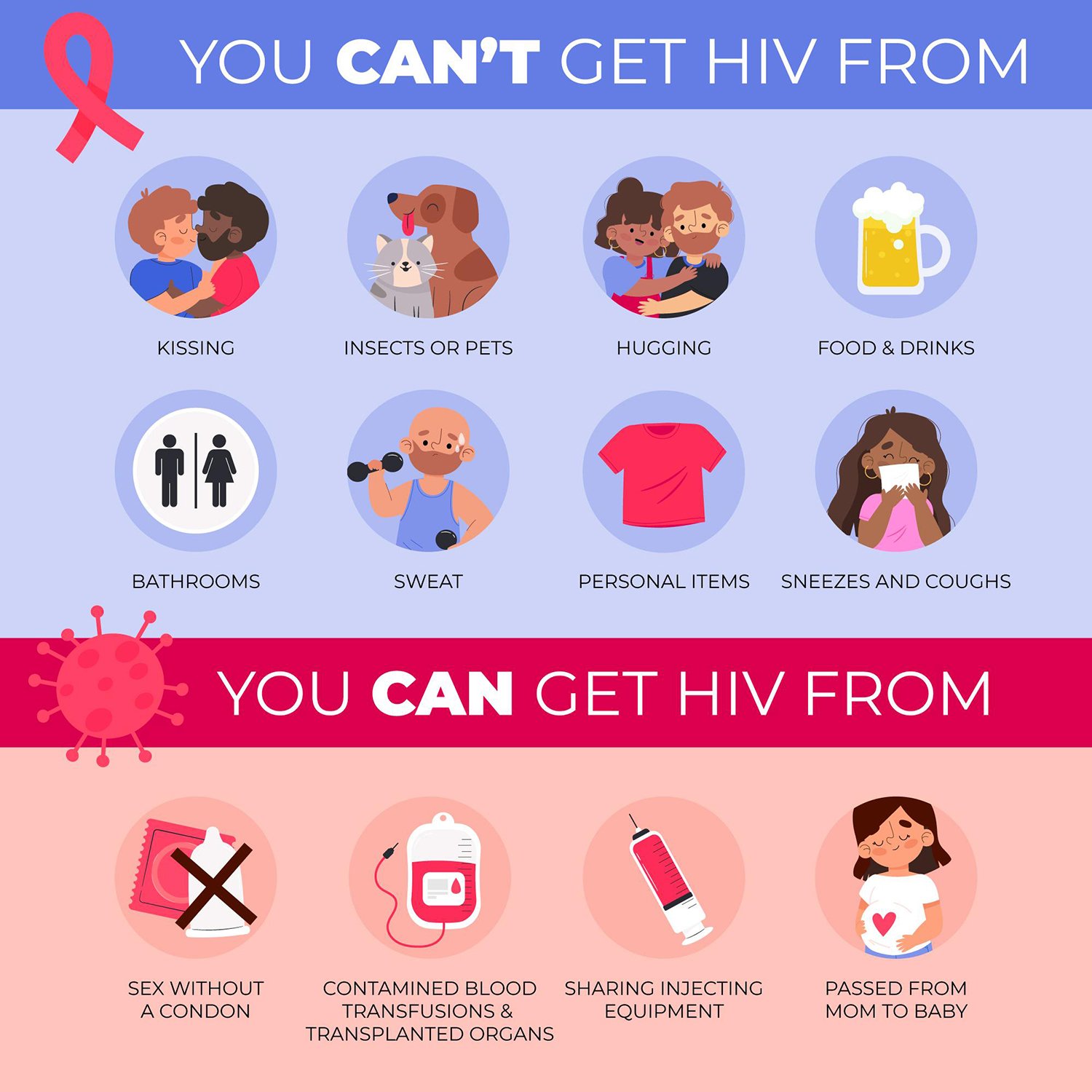
It's important to note that although the risk of HIV transmission is low in these situations, engaging in unprotected sex or sharing needles with an infected person can lead to HIV transmission. Practicing safe sex, using condoms, and avoiding sharing needles are crucial for preventing HIV transmission.
